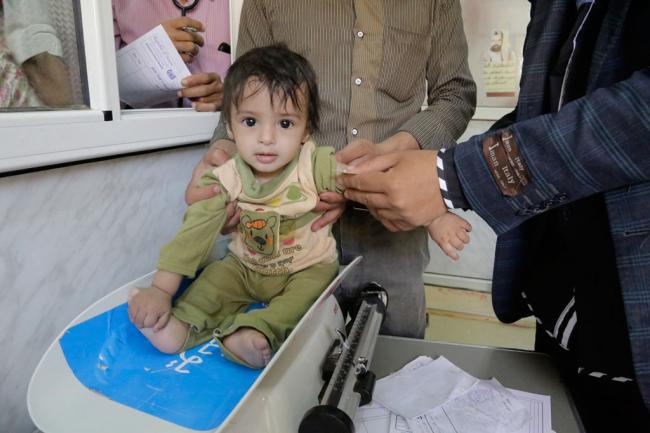
The cost of a polluted environment: 1.7 million child deaths a year, says WHO
Every year, environmental risks – such as indoor and outdoor air pollution, second-hand smoke, unsafe water, lack of sanitation, and inadequate hygiene – take the lives of 1.7 million children under 5 years, say two new WHO reports.
The first report, Inheriting a Sustainable World: Atlas on Children’s Health and the Environment reveals that a large portion of the most common causes of death among children aged 1 month to 5 years – diarrhoea, malaria and pneumonia – are preventable by interventions known to reduce environmental risks, such as access to safe water and clean cooking fuels.
"A polluted environment is a deadly one – particularly for young children," says Dr Margaret Chan, WHO Director-General. "Their developing organs and immune systems, and smaller bodies and airways, make them especially vulnerable to dirty air and water."
Harmful exposures can start in the mother’s womb and increase the risk of premature birth. Additionally, when infants and pre-schoolers are exposed to indoor and outdoor air pollution and second-hand smoke they have an increased risk of pneumonia in childhood, and a lifelong increased risk of chronic respiratory diseases, such as asthma. Exposure to air pollution may also increase their lifelong risk of heart disease, stroke and cancer.
Top 5 causes of death in children under 5 years linked to the environment
A companion report, Don't pollute my future! The impact of the environment on children's health, provides a comprehensive overview of the environment’s impact on children’s health, illustrating the scale of the challenge. Every year:
570 000 children under 5 years die from respiratory infections, such as pneumonia, attributable to indoor and outdoor air pollution, and second-hand smoke.
361 000 children under 5 years die due to diarrhoea, as a result of poor access to clean water, sanitation, and hygiene.
270 000 children die during their first month of life from conditions, including prematurity, which could be prevented through access to clean water, sanitation, and hygiene in health facilities as well as reducing air pollution.
200 000 deaths of children under 5 years from malaria could be prevented through environmental actions, such as reducing breeding sites of mosquitoes or covering drinking-water storage.
200 000 children under 5 years die from unintentional injuries attributable to the environment, such as poisoning, falls, and drowning.
Ongoing and emerging environmental threats to children’s health
"A polluted environment results in a heavy toll on the health of our children," says Dr Maria Neira, WHO Director, Department of Public Health, Environmental and Social Determinants of Health. "Investing in the removal of environmental risks to health, such as improving water quality or using cleaner fuels, will result in massive health benefits."
For example, emerging environmental hazards, such as electronic and electrical waste (such as old mobile phones) that is improperly recycled, expose children to toxins which can lead to reduced intelligence, attention deficits, lung damage, and cancer. The generation of electronic and electrical waste is forecasted to increase by 19% between 2014 and 2018, to 50 million metric tonnes by 2018.
With climate change, temperatures and levels of carbon dioxide are rising, favouring pollen growth which is associated with increased rates of asthma in children. Worldwide, 11–14% of children aged 5 years and older currently report asthma symptoms and an estimated 44% of these are related to environmental exposures. Air pollution, second-hand tobacco smoke, and indoor mould and dampness make asthma more severe in children.
In households without access to basic services, such as safe water and sanitation, or that are smoky due to the use of unclean fuels, such as coal or dung for cooking and heating, children are at an increased risk of diarrhoea and pneumonia.
Children are also exposed to harmful chemicals through food, water, air and products around them. Chemicals, such as fluoride, lead and mercury pesticides, persistent organic pollutants, and others in manufactured goods, eventually find their way into the food chain. And, while leaded petrol has been phased out almost entirely in all countries, lead is still widespread in paints, affecting brain development.
Making all places safe for children
Reducing air pollution inside and outside households, improving safe water and sanitation and improving hygiene (including in health facilities where women give birth), protecting pregnant women from second-hand tobacco smoke, and building safer environments, can prevent children’s deaths and diseases.
Photo: UNICEF/Ma’ad Al-Zekri
Support Our Journalism
We cannot do without you.. your contribution supports unbiased journalism
IBNS is not driven by any ism- not wokeism, not racism, not skewed secularism, not hyper right-wing or left liberal ideals, nor by any hardline religious beliefs or hyper nationalism. We want to serve you good old objective news, as they are. We do not judge or preach. We let people decide for themselves. We only try to present factual and well-sourced news.







